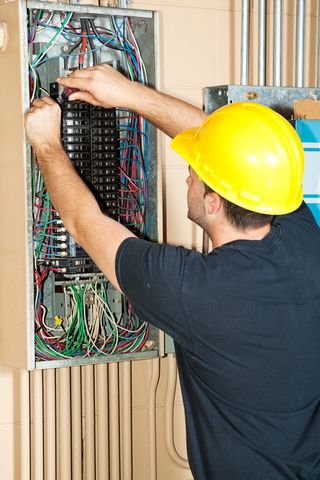The Changing Face of the Humble Demountable
Demountable classrooms (sometimes called pre-fabricated classrooms) have been a familiar feature of many Australian schools for decades, so much so that they have been labelled “iconic.” These temporary classrooms were the government’s solution to the population explosion of the 1960s and 1970s, which was fuelled by a higher school leaving age, the broadening of the curriculum, and increased immigration. Although they were intended to last only about 7 to 10 years, many have been in use for longer than this.
Demountable classrooms were initially seen as an innovative, low-cost response to rapid population growth, despite the fact that they were nicknamed “hot tin cans”. These first-generation of demountables were steel frame structures, with plywood or fibreboard walls that offered little protection against extreme temperatures. Later models were fitted with A/C units and awnings to provide shade.
Today however, these temporary classrooms are seen as outdated, as proof that schools are unable to provide for a growing student body. Some view them as substandard, with School Teachers saying that they and their students “feel like second-class citizens” when they use them. These opinions are justified when teachers and students are forced to make do with dilapidated demountables in need of a facelift. Typically, the government is slow to attend to such matters; indeed it has been recently revealed that of the 4,665 demountable classrooms in New South Wales state schools, 1,462 have been in place for more than a decade.
Currently, 1 in 10 New South Wales public school classrooms is pre-fabricated. This number is expected to increase, with Education Minister Rob Stokes confirming that more demountable classrooms will allow the government to cope with unprecedented student enrollment in the public system. It is estimated that the number of students will have increased by 17% or 650,000 across Australia by 2026. Some suggest that in areas where population growth is unpredictable, such as mining communities, the demountable classrooms is the most economically efficient way to meet demand.
Demountables have also been used or perhaps misused as a quick-fix solution in the face of poor planning. Take the case of Dalmeny Public School in Prestons. Despite the fact that it only opened in 2003, it uses 18 demountable classrooms to accommodate double the number of students it was originally intended for. Land is increasingly scarce in many areas, particularly in Sydney’s inner city suburbs and other metropolitan areas, and too few new schools are built. For example, Melbourne’s urban Dockland district has no school. Similarly, no new school was planned for the Sydney suburb of North Ryde, despite an expected 24,000 residents moving to the area.
If demountable classrooms are to be a long-term solution, they must be movable, and yet look and feel like permanent buildings with all necessary modern conveniences. NSW Education Minister Stokes, says the government will invest in two-storey, environmentally friendly modular block classrooms in areas where predicted enrolment growth will last longer than seven years. Moreover, updated demountables are often a far cry from their “tin can” predecessors, complete with the thermal, acoustic, or even aesthetic features of permanent buildings. Such upgrades have made the temporary classroom (modular classroom) a preferred teaching environment for some.
So what are the pros and cons of the modern portable classroom?
The Pros
- Potable classrooms can be moved quickly and easily to accommodate shifting patterns in population growth, and short-lived expansion in communities which depend on income from mining, tourism, and construction industries.
- They are versatile spaces and can be tailored to suit the requirements of particular disciplines or teachers, with thermal, acoustic, and aesthetic features that are comparable to those of permanent classrooms.
- They are cheaper to build than permanent structures. This is an important consideration for state schools in view of the current student boom.
The Cons
- The government’s failure to regularly refurbish or replace older demountables means that some are more disadvantaged than others with regard to educational resources.
- Older portable classrooms frequently need minor repairs. In the long run, this usually costs more than if they were replaced by newer portable classrooms or permanent buildings.
- Since space is in short supply, temporary school classrooms use space required for outdoor activities, which counterbalance our increasingly sedentary lifestyle.
- Demountable buildings risk being damaged if they are frequently relocated.
- Demountable classrooms are sometimes placed far away from permanent school buildings which means that students and teachers often spend precious break time travelling to and from classrooms.
In Conclusion
It’s clear that the Australian government needs to plan efficiently and effectively for the future. Politicians need to invest more in schools, study population growth trends, and commit to building high-quality permanent and temporary classrooms. In the process, they must balance cost-effective solutions with both the short-term and long-term needs of school communities.
Sources
“Iconic Buildings of Australia: pre-fabricated classrooms.” Presented by Jonathan Green and Colin Bisset. Blueprint for Living. Radio National. 5 December, 2015.
Browne, Rachel. “What’s so bad about pre-fabricated classrooms?” The Sydney Morning Herald. 27 September, 2012.
Goss, Peter. “Should you worry about a school’s shortage? It really depends on where you live.” The Conversation. 22 January, 2016.
Munro, Kelsey, and Inga Ting. “Pre-fabricated classrooms here to stay, says Education Minister Rob Stokes.” The Sydney Morning Herald. 14 May, 2017.
Philipson, Graeme. “Pre-fabricated classrooms here to stay in NSW.” GovernmentNews. 29 October, 2017.



